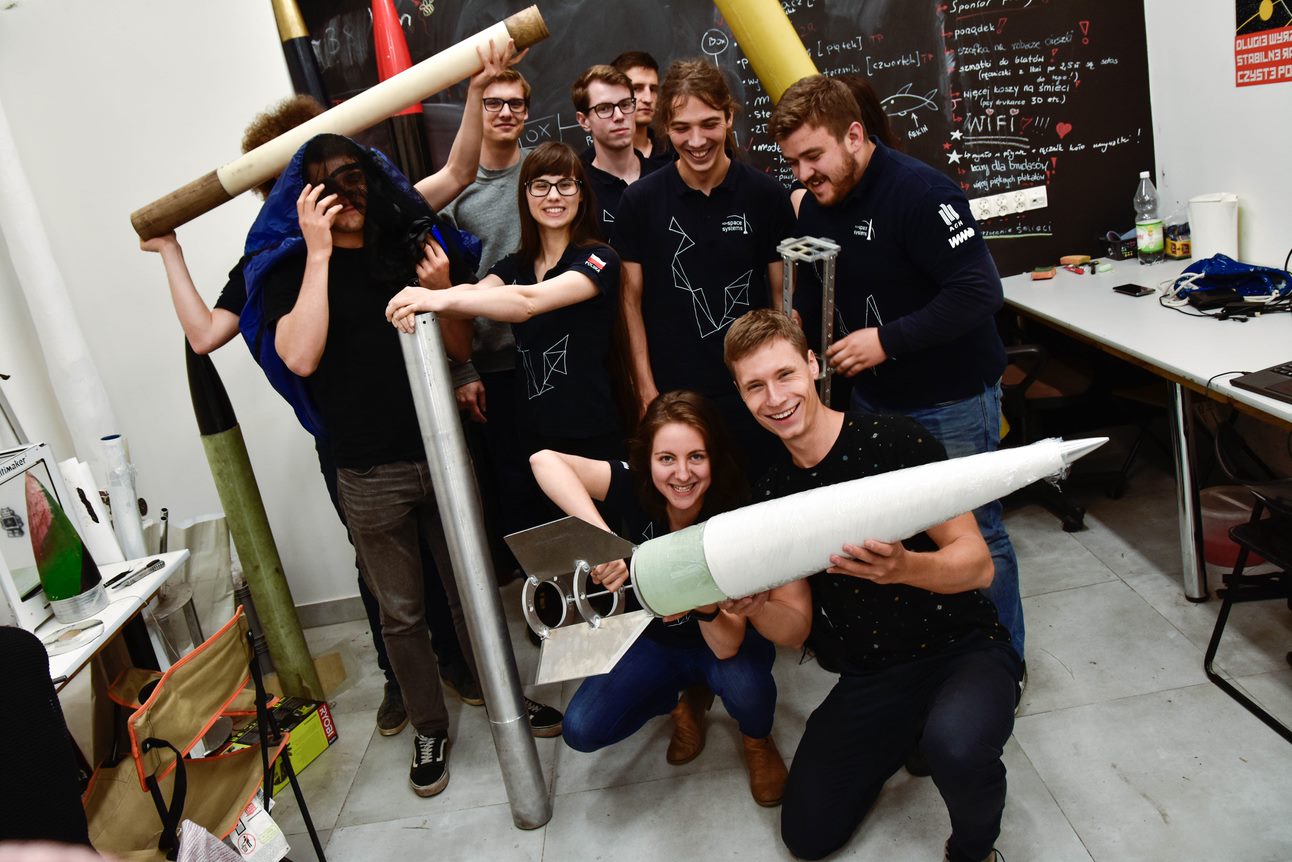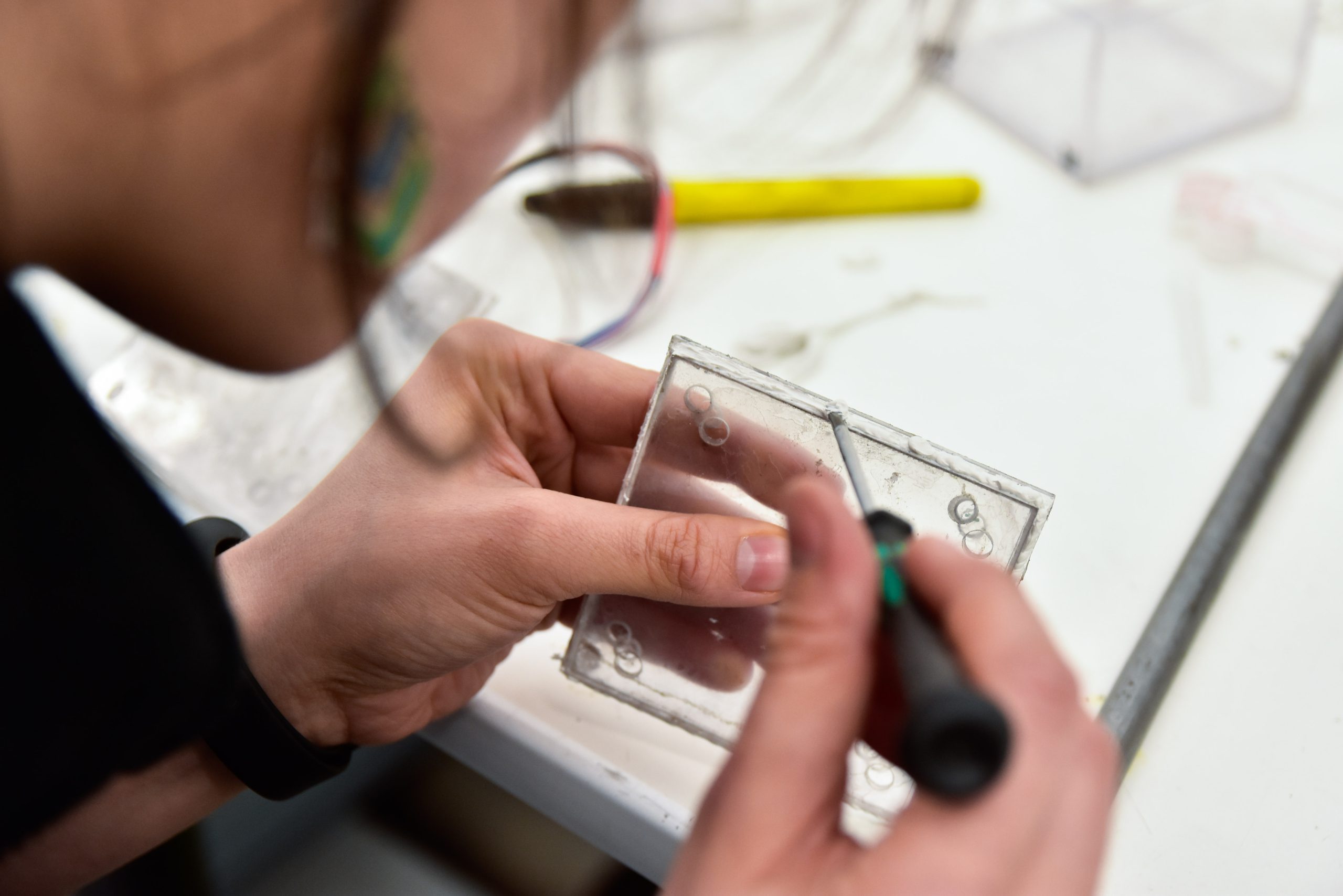


PROtotype, the successor to Pandy3, is a design created with the goal of participating in the Spaceport America Cup 2019 in New Mexico. It is the fourth and also the largest hybrid rocket created by AGH Space Systems. The experience gained during the construction of Pandy3 allowed for the refinement of existing solutions and the introduction of new, innovative technologies that enhanced the reliability of the structure.
The main task of the design was a flight to an altitude of 10,000 feet (about 3 km), the safe delivery and protection of a 4-kilogram payload, and landing using a two-stage recovery system. The onboard electronic systems were responsible for managing all the rocket’s functionalities. This included controlling the engine, the remote fueling system, parachute deployment, and transmitting the rocket’s location to the ground station. Additionally, their task was also to collect flight data using a gyroscope, barometer, and accelerometer.

Rocket length 4.85 m
Rocket diameter 16 cm
Rocket weight 33.6 kg
Propellant weight 13.4 kg
Rocket launch weight 47 kg
Number of stages 1
Engine type hybrid
Fuel polyamide
Oxidizer nitrous oxide
Thrust 3000 N
Total impulse 18,000 Ns
Max. acceleration 6.1 G
Max. speed 335 m/s
Expected apogee 6.3 km
The PROprototype rocket was designed with the aim of developing all subsystems, unlike the Pandy3. The most significant change was the use of a new propulsion system. The engine, powered by liquid nitrous oxide and polyamide, generates a thrust of 3000 N, which enabled the increase in the size of the rocket and its components. Additionally, in order to improve safety, a remote refueling system for the tank and an innovative engine ignition initiation method were developed.
The rocket’s structure was made from fiberglass laminates and kevlar to minimize the rocket’s weight while maintaining its high structural strength. The rocket’s structure also includes a high-pressure tank containing the oxidizer. The aluminum tank, rated for a strength of over 120 bar, is capable of holding more than 12 kg of nitrous oxide.
The recovery system is based on the use of two parachutes. The first one opens at apogee, reducing the rocket’s descent speed to 26 m/s, while the second is deployed at an altitude of 500 m, slowing the descent to about 9 m/s. The separation of the nose cone is achieved using a pyrotechnic system, controlled by the onboard electronics, which analyzes the data to precisely determine the rocket’s position.
As part of the experiment carried on board the rocket, a research payload was carried. The experiment studied the strength and stress levels of honeybees (Apis mellifera) during the rocket flight. The insects were exposed to accelerations up to 7G, intense vibrations, and high temperatures. The goal of the experiment was to assess the impact of these factors on the queen bee’s ability to reproduce later.
Thorough preparation of the structure, combined with numerous tests of all subsystems, allowed for the creation of one of the most advanced designs in our section. Moreover, the repeatedly tested propulsion system enabled reaching the designated altitude, and the electronic systems allowed the maximum amount of data about the rocket to be read from the ground station. The precision of the construction was appreciated by the judges of the Spaceport America Cup 2019, who awarded it with the special Technical Excellence Award. To win this award, PROtype managed to outperform over 130 teams from around the world.
After receiving approval from the judges, the rocket’s actual mission began. Unfortunately, during the preparations for launch, an unforeseen damage occurred, which significantly limited the rocket’s flight altitude and prevented the full use of the recovery system. The flight was too short for the main parachute to deploy, so only the smaller one opened. However, the electronics and ignition system worked very well, which was noted by the evaluators.
Ultimately, PROprototype secured a high 2nd place in the Spaceport America Cup 2019 in the category of flight to an altitude of 10,000 feet.
Leader: Agata Zwolak
Hybrid Propulsion Section: Bartosz Wyciszkiewicz, Agata Zwolak, Michał Pyza, Wojciech Kłos
Mechanical and Recovery System Section: Michał Pyza, Piotr Roszkowski, Marek Hyży, Paweł Lysy, Monika Jagielska, Artur Biernat, Dagmara Stasiowska
Electronics Section: Tomasz Tatara, Maciej Wyżliński, Mateusz Rajzer, Piotr Sławęcki, Bartosz Zieliński, Andrzej Laczewski
Ground Station Section: Piotr Szmigielski, Jakub Turaj, Weronika Gołota, Paweł Lysy
Logistics and Marketing Section: Paweł Graczak, Joanna Dubielewska